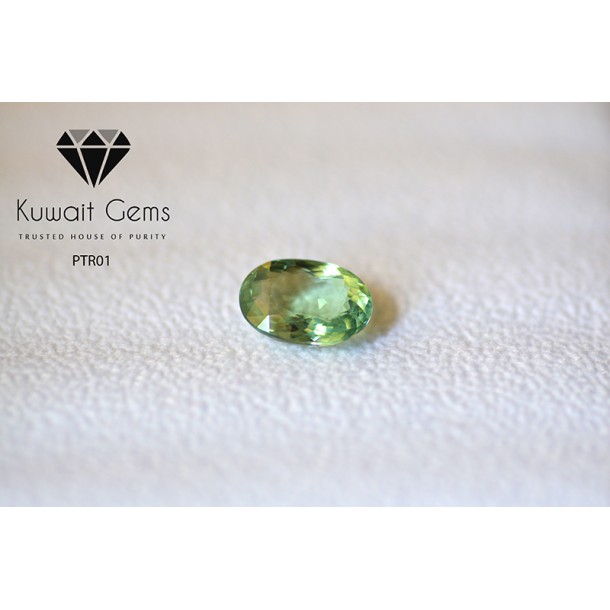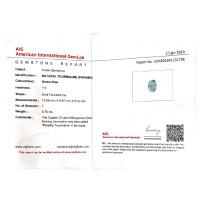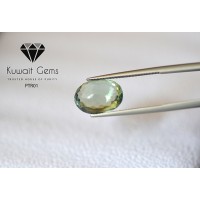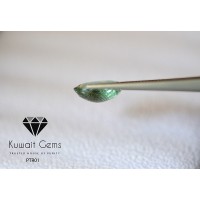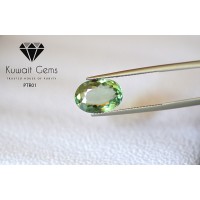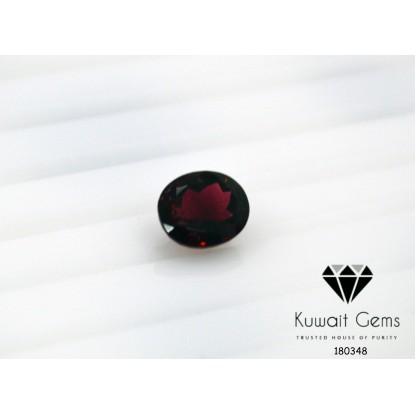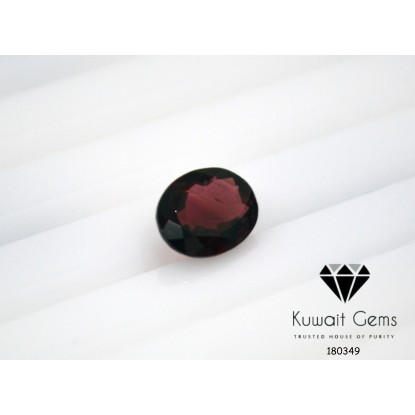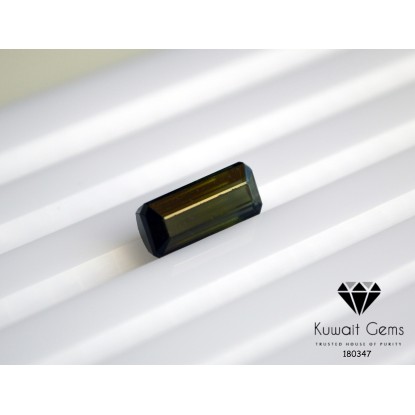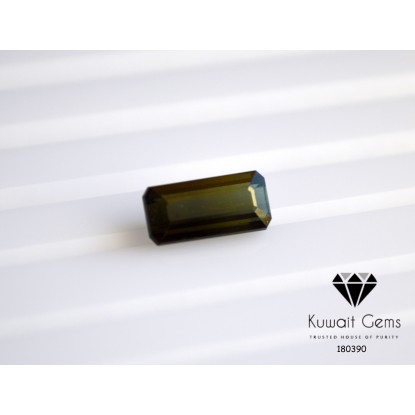Paraiba Tourmaline - PTR01
- Product Code:PTR01
- CompositionCopper and Manganese
- ShapeOval
- Weight5.75 Carat
- Size/Dimensions 13.66 x 9.57 x 5.72 * * mm
- ClarityTransparent
- TreatmentNone
- OriginMozambique
- CertificationAvailable
- Availability:In Stock
-
KD 880.000
Beautiful, colorful, phenomenal tourmaline may
be the world’s most versatile and varied gemstone.
Tourmaline is available in more colors than any
other gemstone, so it is fitting that it serves as the birthstone for October,
when the seasons change in the Northern hemisphere and trees are alive with
color. In addition to its status as the October birthstone,
tourmaline is also the gem of the eighth wedding anniversary. The name comes
from the Singhalese words “tura mali,” which translates to “stone with mixed
colors.” It is the gemstone of love and of friendship and is said to render the
wearer’s relationships firm and long-lasting.
“Tourmaline is an incredible gem that
comes in many unique colors, and I think that's why people like them so much,”
says gem dealer Tracy Lindway of Gems by Nomads, New York City. “People can
choose a gem in the precise color that speaks to them... and chances are their
friends and neighbors won't have a stone in the exact same color. Tourmaline is
a gem that really lets the wearer show his/her individuality,” says Lindway.
Tourmaline can be found all over the world, but
most is mined in Brazil and Africa. It can also be sourced in Afghanistan and
nearby regions, and there are even some scattered mines in the U.S. In Africa
it is mined in Mozambique, Zambia, Namibia, Madagascar and Nigeria. According
to New York gem dealer Tracy Lindway, there is no one location where the “best”
tourmaline is mined. “Each geographic source can produce both very fine
tourmaline and lower grade tourmaline.
Paraiba tourmaline, discovered in 1987 at a
mine in the Brazilian state of Paraiba, has become the most prized of all
tourmaline colors because of its striking neon color and its rarity. Paraiba is
an elbaite tourmaline, with large amounts of the trace elements manganese and
copper. These elements cause colors that range from greenish blue, bluish
green, green, blue, and violet hues. Although buyers covet all these colors,
blue and violet have the most appeal. The gem’s unique, vivid coloring sets it
apart from other tourmalines. Even prized rubellite reds and chrome greens do
not reach the prices commanded by fine Paraiba. Because of its high value,
Paraiba tourmalines are almost always custom cut. They are usually faceted into
brilliant cuts, commonly pear and oval shapes. Paraíba tourmaline is rarely cut
to sizes bigger than one carat. With Paraíba, however, color is the key factor,
rather than size. A small, vividly colored stone has a greater value than a
larger one of lesser color, all other factors being equal.


